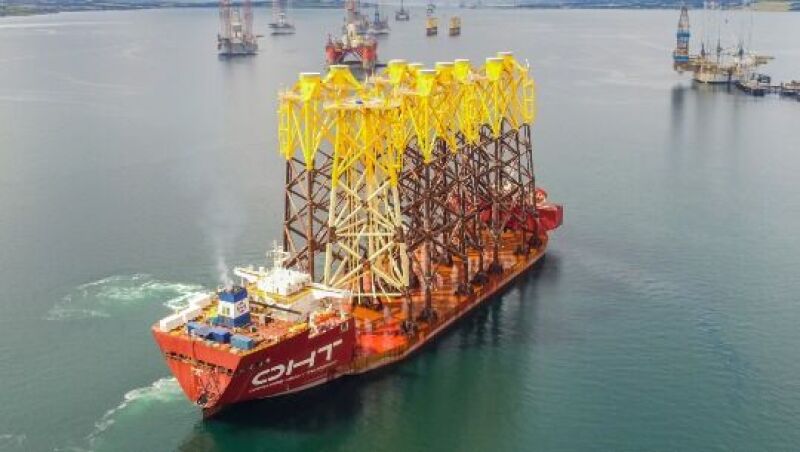Subsea 7 is expanding its offshore wind construction business with a deal that puts it in control of a company that effectively doubles its fleets of vessels to transport and install offshore turbines.
It will combine its current offshore wind business with another Norwegian company, OHT, known for transporting massive components. Combining these companies with roots in the oil business is expected to create a stronger, more diversified provider of installation services called Seaway 7.
Both companies are drawing on their experience in deepwater oil developments to rapidly expand into renewable power.
In its first quarter report, the UK-headquarted Subsea 7 reported that 30% of $1.8-billion worth of its order backlog is now from its renewables business and nearly one-quarter of its revenues.
While Subsea 7’s offshore oil and gas business is growing—up 10% from last year’s depressed levels—its renewables business reported a nearly 300% year-to-year first-quarter revenue increase.
Owning 72% of Seaway 7 shares will allow it to report revenues and earnings from that venture on its reports, which will not contribute a big change. OHT’s reported $11 million in revenues during the first quarter compared to $241 million in renewable revenues reported by Subsea 7, whose total nearly reached $1 billion.
The significant change for Subsea 7 comes with the doubling in the size of the vessels in its renewables fleet, which will total 10 with each company providing five. The newest of the OHT vessels is its first for installing the tall foundations, and two others are under construction and to be delivered over the next 3 years. These will include cranes tall enough to install the turbines on the huge structures.
Between 2020 and 2030, the annual installation of wind power, measured in gigawatts (GW), is anticipated to grow at a compound average rate greater than 20%, the announcement of the deal said.
“Installation capacity in all markets is expected to be absorbed by 2025,” leading to strong improvements in demand for project support, transport, and installation services starting then, the release said.
In the US alone, the Biden administration has set a goal of adding 30 GW of wind power which OHT said is “as much as has been installed globally since the inception of offshore wind.”
Before this decade, OHT depended on the oil business because its megaprojects required heavy-transport ships with massive flat decks, which could handle 10 wind-turbine foundations, each weighing 1,000 tons and standing 80 m high.
During the first quarter, more than half of those loads were related to offshore wind, followed by shipments for offshore oil and gas projects. While the future of wind is promising, it has been frustrating lately
A slide in OHT’s first-quarter report offered reasons why its expectations of a growing contract backlog proved too optimistic. The prime reason offered was the delay of decisions on tenders because of redesigns to accommodate the latest wind-turbine generator designs.
Another reason for the companies’ combination is Subsea 7’s deep pockets, which can make it easier to raise the money needed to finance rapid growth in a business that requires major upfront investments.
By scaling up Seaway 7, Subsea 7 will have a tight relationship with a company that can build big projects and also ensure components are delivered on time.
The deal transfers Subsea 7s operations related to building wind turbines that stand on the seafloor, but it retains a project which is developing a floating wind turbine design for deeper waters. A recent presentation described the Salamander project off Scotland as a “pre-commercial” stepping-stone project to someday building floating wind farms.


